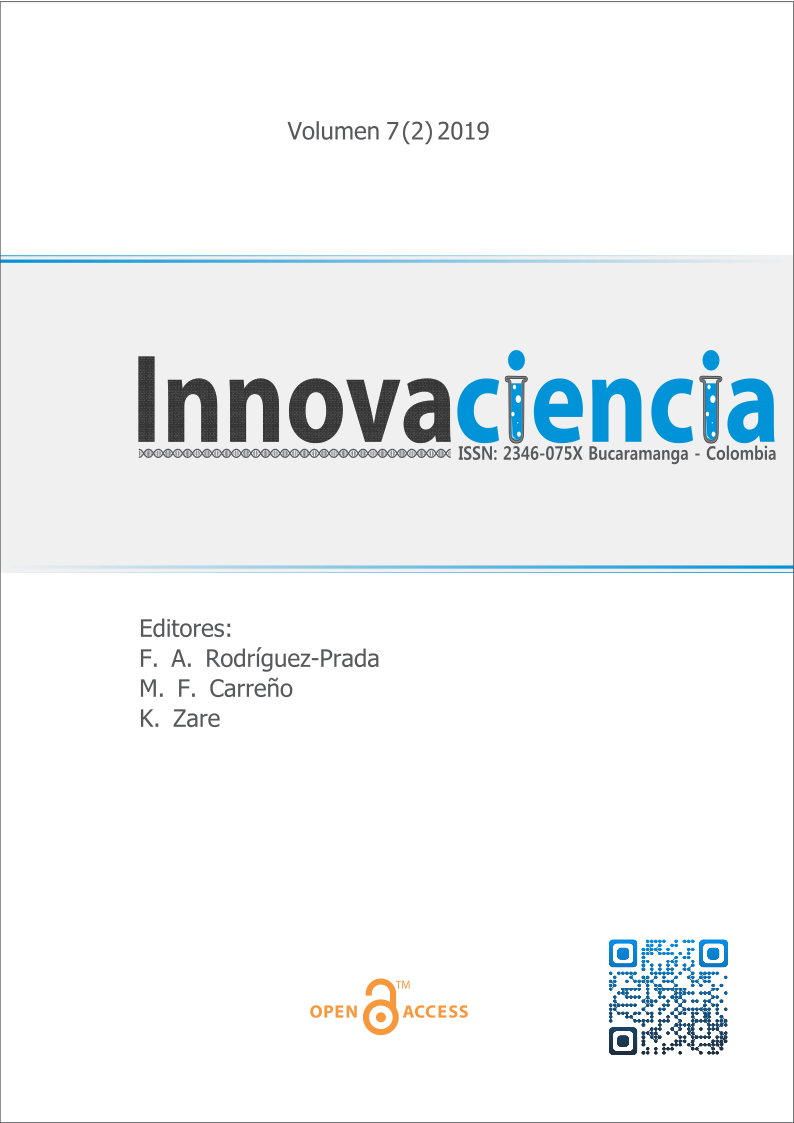Los símbolos de la sostenibilidad ambiental en las creencias religiosas iraníes haciendo énfasis en el Zoroastrismo y el Islam
DOI:
https://doi.org/10.15649/2346075X.760Palabras clave:
Iranian Culture, Religious Belief, Environmental Sustainability, Symbol.Resumen
Environmental issues have always been one of the main axes of
sustainable development and the main challenges of the governments. The thing that has caused the most damage to nature is the
over-exploitation of man from nature with modernist perspectives. It seems that human beings have a more peaceful, environmentally
friendly attitude in the frameworks of traditional views. The two Zoroastrian and Islamic religions have had significant effects on
Iranian thought since the beginning of the formation of powerful ancient and historical powers in Iran. Religions have used symbolic
languages to express the deep concepts and the induction of internal effects. This study used a descriptive-historical method to
identify the symbols related to environmental in indigenous culture and dominant religious beliefs in Iran. The data was collected using
documentary research method. The research findings indicate that symbols can be categorized in six major groups including; symbols
of sky, wind, and celestial bodies: 1- moon, stars, sun and planets, 2- mountain, soil, rock, cave, desert, 3- water, river, fountains, 4-
plants: flowers, trees, 5- animals, 6- fire and light. There is a close relationship between Zoroastrian and Islamic beliefs toward elements
of nature, in which respect for nature is considered as religious duties. Various symbols have emerged because of these beliefs in
Iranian culture that have the ability to capture cultural, literary and artistic realms, sustainable architecture and urbanization on a regional, national, and international scale in order to preserve and restore the environment.
Referencias
Mohammadzadeh, R. "The study of the status of nature in modernity and face-to-face challenges with emphasis on Iranian cities", Geography and Urban Planning, Vol. 18, No. 48, pp. 245-278, 2013
Fouladi M., Hassanpour M., "The Role of Symbol and Symbolism in Human Life, A Sociological Analysis", Social Cultural Knowledge, Year 6, No. 4, Successive 24, Pages: 133-152, 2015.
Tufiqi, h. Familiarity with the Great Religions, SAMT Pub, 2012.
Rul Alamini, M. Cultural and social phenomena in Persian literature, Agah publication, 2000.
Farahvashi, B. Yashtha, Volume 1 & 2, Tehran University Press, 1977.
Loneliness, h. Sociology in Religions, Behabad Publication, 1994.
Javadi-Ameli, A "The environmental culture is blended with the superior position of God's succession," the International Conference on the Environment, Religion and Culture, 2001.
Akbari Rad, Tayebeh. "The Role of Islamic Teaching in Reducing Environmental Crises," Environmental Journal, Vol. 39, No. 1, pp. 73-80, 2013.
Mohaqeq Damad, M. Nature and the Environment of Man from the Viewpoint of Islam, Rahnemoun Publishing, 1992.
Sarkhosh Curtis. Iranian mythology, Translator: Abbas Mokhber, Markaz Pub, 2009.
Kumen, F. Mithraism mystery ritual, Translator: Hashem Razi, Behjat Publishing House, 2004.
Bahar, M. Research in Iranian mythology, Agah Publishing House, 1996.
Yahaqi, M. Culture of mythology and storytelling in Persian literature, Farhang-e Mo'asere publication, 2007.
Hejazi, M. "Symbols of the Gravestones of Sefid Chah Cemetery ", The first national conference of the art of Tabarestan, Pages: 49-37, 2012.
Razaghi, A. Quranic Oaths, Publisher of Imam Sadiq Institute of Education and Research, 2004.
Mei, Y.P “Mountains”, Encyclopedia of Religion, Mircea Eliade (ed.), vol.14, MacMillan Reference Books, New York, 1987.
Sirlo, h. Dictionary of Symbols, Mehrangiz Oohadi, Dastan pub, 2013.
Hilens, J. Iranian Myth, Mahnaz Shayestehfar, Islamic Institute of Publications, 2009.
Crimson, Roman. Iran from the Beginning of Islam, Translator: Mohammad Moein, Science and Culture Publishing, 1989.
Qomi, Sh. Al-Bohar and Madinah al-Hakam and Al-Isar, Volume 2, Islamic Publications Office, 1999.
Javadi, Sh. "Reviewing the ancient narrative" Water and Tree "during the Islamic era of Iran," East Art and Civilization, First Year, No. 1, Pages: 43-50, 2013.
Rasulli Mahallati, S. The Life of Hazrat Fatemeh (S), Office of the Publishing of Islamic Culture, Tehran, 2002.
Nouri, Mirza Hussein. Mustardak al-Sousil, Volume 3, Al-Alibat Institute, 1408 AH.
Karami, M., Naghizadeh, H. "Infrastructure of Plant Rights from the Quranic Perspective", Journal of Islamic Traditional Medicine and Iran, Vol. 5, No. 1, pp. 61-67, 2014.
Rashed Mousal, M. Translated by Zad Sperm, Cultural Studies and Research Institute, 1987.
Eliadeh, M. Treatise on the History of the Religions, Translator: Jalal Sattari, Soroush Publication, 1993.
Hosseini Kazerouni, S., Motevaseli, N., Nadafi, M., "Goshorun (Anthology and Mythological Review in Ferdowsi's Shahnameh"), Quarterly Journal of Educational and Enrichment Studies of Persian Language and Literature, Islamic Azad University, Bushehr Branch, No. Successive 28, 31-44, 2016.
Purdavood, A. Yasna, Rushdie Pub, 1961.
Habibi, p. "Fire and the symbolism of religious and literary mythology in Hafez's sonnets", 6th National Conference on Literary Research, Persian Literature Society of Shahid Beheshti University, 2012.
Seyed Mohammad Ali Dibaji (2011), "The Status of Light in the Illumination Philosophy", Religious Thought Quarterly, Shiraz University. 39, p. 3.

Descargas
Publicado
Cómo citar
Descargas
Número
Sección
Licencia
Todos los artículos publicados en esta revista científica están protegidos por los derechos de autor. Los autores retienen los derechos de autor y conceden a la revista el derecho de primera publicación con el trabajo simultáneamente licenciado bajo una Licencia Creative Commons Atribución-NoComercial 4.0 Internacional (CC BY-NC 4.0) que permite compartir el trabajo con reconocimiento de autoría y sin fines comerciales.
Los lectores pueden copiar y distribuir el material de este número de la revista para fines no comerciales en cualquier medio, siempre que se cite el trabajo original y se den crédito a los autores y a la revista.
Cualquier uso comercial del material de esta revista está estrictamente prohibido sin el permiso por escrito del titular de los derechos de autor.
Para obtener más información sobre los derechos de autor de la revista y las políticas de acceso abierto, por favor visite nuestro sitio web.















